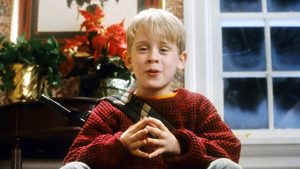A Love Letter to Editing: 5 Lessons for Filmmakers from Filmmaker Jon Lefkovitz
By Martin Keady · April 30, 2020
Jon Lefkovitz is a director, editor and composer. He is the director and editor of Rubber Soul (2014), a feature film about John Lennon; and he directed Sight & Sound: The Cinema of Walter Murch (2019), a documentary about the legendary editor and film theorist Walter Murch (editor of Apocalypse Now, The Godfather, American Graffiti, The Conversation, Cold Mountain and The English Patient). Having studied Walter Murch’s work and process so deeply, Jon Lefkovitz is uniquely positioned to offer his insights to all filmmakers, including screenwriters, as ultimately all art is in some way editing.
Before we dive in, here’s the trailer:
Here are five key takeaways for filmmakers:
1. EDITING IS WHEN A MOVIE FINALLY STARTS TO FEEL LIKE A MOVIE
“To paraphrase Stanley Kubrick, when you’re shooting, you’re trying to write War and Peace on a bumper car ride. When you’re editing, though, you’re free from distractions and you can experiment endlessly until every cut feels right. Sight & Sound is a documentary that is a love letter not only to Walter Murch but also to the editing process. The editing of that was very meta, because I was at times applying Murch’s wisdom while making a film about his wisdom. The fundamental conceit of my previous feature Rubber Soul is achieved through the editing – I intercut two different moments in John Lennon’s life to paint a fuller portrait of him as a human being, and of the dynamic nature of identity in general.”
2) EDITING IS SUBJECTIVE AND YOU CAN USE A FRESH PAIR OF EYES AT THE END
“On [the film] 11/8/16, I waded through hundreds of hours of footage submitted by 16 film-makers around the country and tried to whittle it down into a coherent narrative about that day [when Donald Trump won the US Presidency]. But editing is subjective, and for an ambitious mash-up documentary like 11/8/16, it made sense for producer Jeff Deutchman to bring a pair of fresh eyes to the editing room, in the form of Emmy-winner and Sundance alum Martha Shane, who rearranged some scenes and restored some moments that I’d omitted. I’m proud of the final product that Jeff, Martha and I completed together by combining our perspectives. The film didn’t get as much traction as we had hoped during its initial release, but I believe it will re-emerge decades from now as an essential document of how we arrived at this disturbing moment in history.”
3) WALTER MURCH IS ESSENTIAL – AND NOT JUST TO EDITORS
“As an editor, it was a no-brainer to make an ode to my editing hero. For half a century, Murch has been involved in many different milestones of film history, from being a key figure of the American New Wave to re-cutting Orson Welles’s Touch of Evil (1958), to working on the restoration of the first sound film from the 1890s. When I was a budding teenage cinephile, I was inspired by In the Blink of an Eye [Murch’s own book about editing] and Michael Ondaatje’s The Conversations [the classic book by the author of The English Patient about editing and writing]. The Conversation (1974) itself [which Murch completed while Francis Ford Coppola was shooting The Godfather Part II] remains one of my top five favorite films of all time. What other editor is also a sound designer, director, and writer, as well as a natural philosopher whose insights and theories are so fascinating and illuminating?”
4) YOU CAN EVEN EDIT SHAKESPEARE’S DIALOGUE
“I’m obsessed with artists who are the best in their field – Hitchcock, Murch, The Beatles, Bernard Herrmann and of course the Bard. My mom is a drama teacher who instilled a love of theater and Shakespeare in me as a child. I’ve always found Shakespeare’s language challenging but overwhelmingly powerful once you decode it. While watching a production of Macbeth, I had an idea: what if I could tell an original story in which all of the dialogue was decontextualized from Shakespeare’s poems and plays? I proceeded to write such a screenplay with my friend Briggs Hatton in which we wrote one story for each of Shakespeare’s “Seven Ages” of Man. For better or worse, I could only afford to produce the Lover section. Perhaps one day, I’ll make the other six ages and turn it into the feature it was intended to be.”
5) ULTIMATELY, SOUND IS MORE IMPORTANT THAN PICTURE – EVEN IN CINEMA
“I’m not a sound wizard like Walter Murch, but the single most important lesson I learned in film school was that sound is more important than picture. You can watch and understand a film with shoddy cinematography and impeccable sound, but not the other way around. Good audio recording is far from easy, but it’s invaluable.”
Enjoyed this article? Check out Martin Keady’s other articles for The Script Lab.
Martin Keady is an award-winning scriptwriter whose work has been produced for film, television, stage and radio. His major credits include: The Final, a short film about the famous ending of the 1979 FA Cup Final, which was shown on Channel Four; Moon the Loon, a play about the legendary Who drummer, Keith Moon, which was premiered at The Edinburgh Festival; and a collection of love poetry, Shards, extracts from which have been broadcast on Radio Four.”
For all the latest screenwriting inspiration and articles from The Script Lab, be sure to follow us on Twitter, Facebook, and Instagram.
























